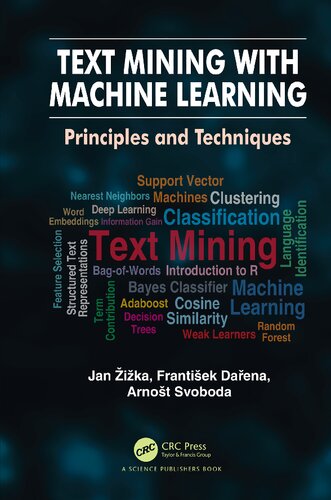

Most ebook files are in PDF format, so you can easily read them using various software such as Foxit Reader or directly on the Google Chrome browser.
Some ebook files are released by publishers in other formats such as .awz, .mobi, .epub, .fb2, etc. You may need to install specific software to read these formats on mobile/PC, such as Calibre.
Please read the tutorial at this link. https://ebooknice.com/page/post?id=faq
We offer FREE conversion to the popular formats you request; however, this may take some time. Therefore, right after payment, please email us, and we will try to provide the service as quickly as possible.
For some exceptional file formats or broken links (if any), please refrain from opening any disputes. Instead, email us first, and we will try to assist within a maximum of 6 hours.
EbookNice Team

Status:
Available0.0
0 reviewsThis book provides a perspective on the application of machine learning-based methods in knowledge discovery from natural languages texts. By analysing various data sets, conclusions which are not normally evident, emerge and can be used for various purposes and applications. The book provides explanations of principles of time-proven machine learning algorithms applied in text mining together with step-by-step demonstrations of how to reveal the semantic contents in real-world datasets using the popular R-language with its implemented machine learning algorithms. The book is not only aimed at IT specialists, but is meant for a wider audience that needs to process big sets of text documents and has basic knowledge of the subject, e.g. e-mail service providers, online shoppers, librarians, etc.
The book starts with an introduction to text-based natural language data processing and its goals and problems. It focuses on machine learning, presenting various algorithms with their use and possibilities, and reviews the positives and negatives. Beginning with the initial data pre-processing, a reader can follow the steps provided in the R-language including the subsuming of various available plug-ins into the resulting software tool. A big advantage is that R also contains many libraries implementing machine learning algorithms, so a reader can concentrate on the principal target without the need to implement the details of the algorithms her- or himself. To make sense of the results, the book also provides explanations of the algorithms, which supports the final evaluation and interpretation of the results. The examples are demonstrated using realworld data from commonly accessible Internet sources.